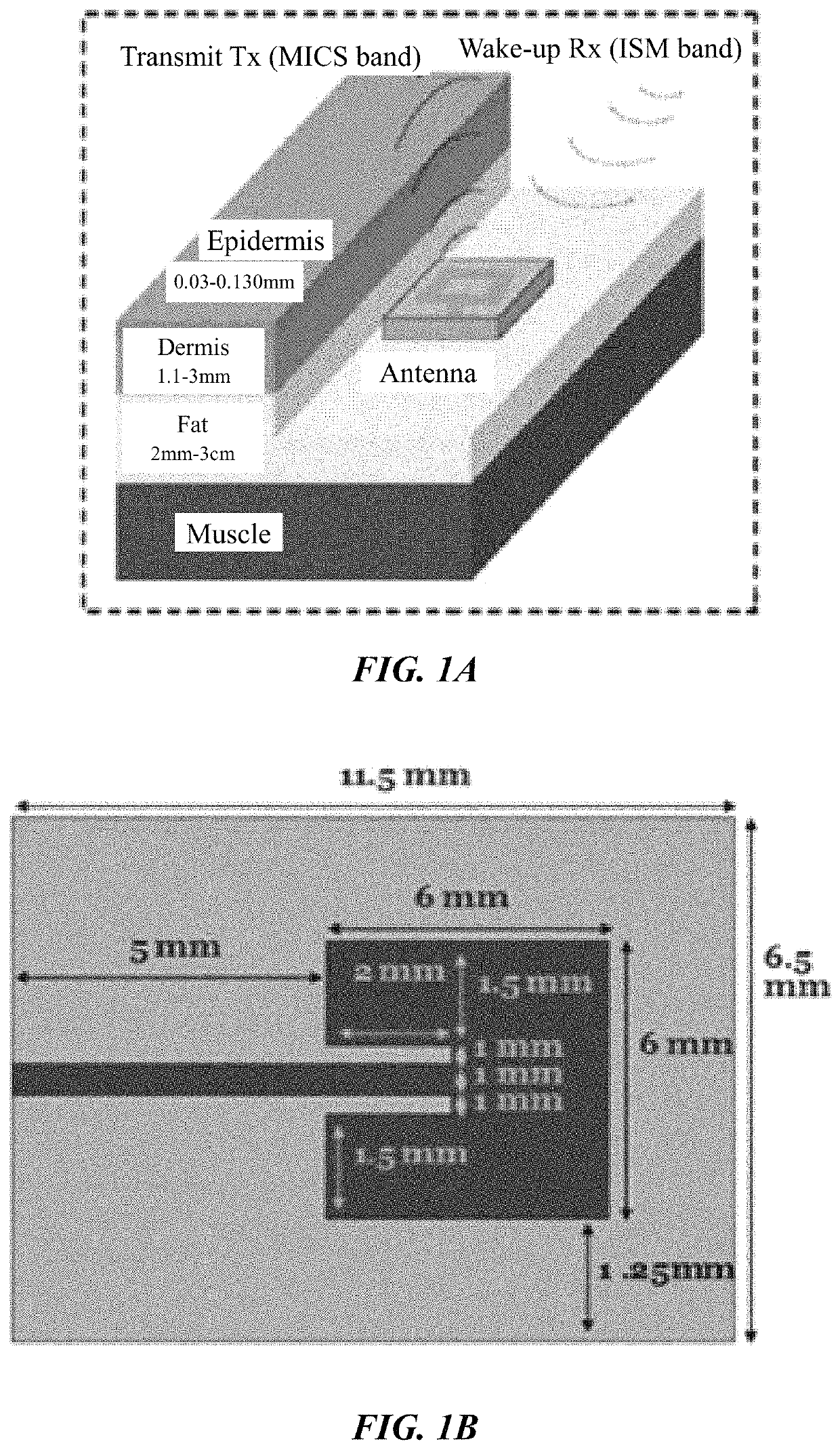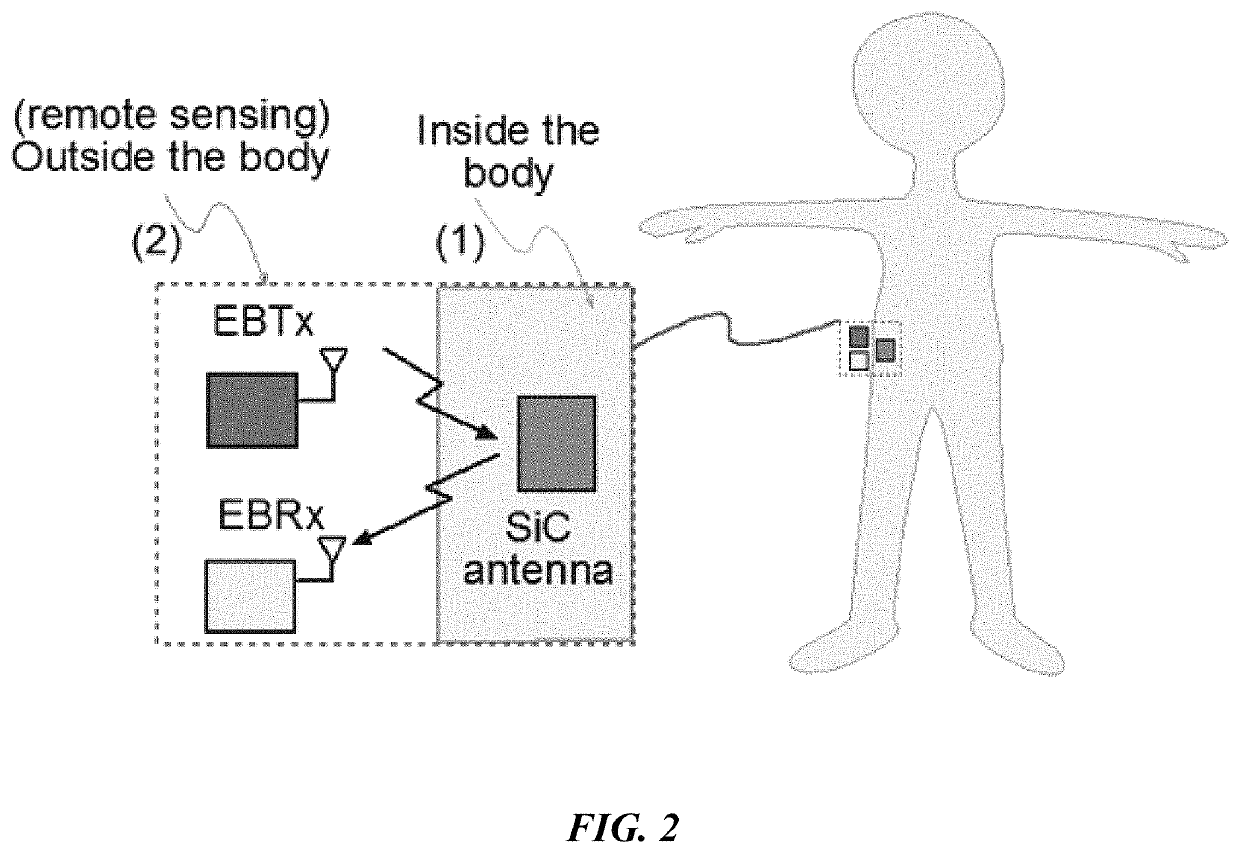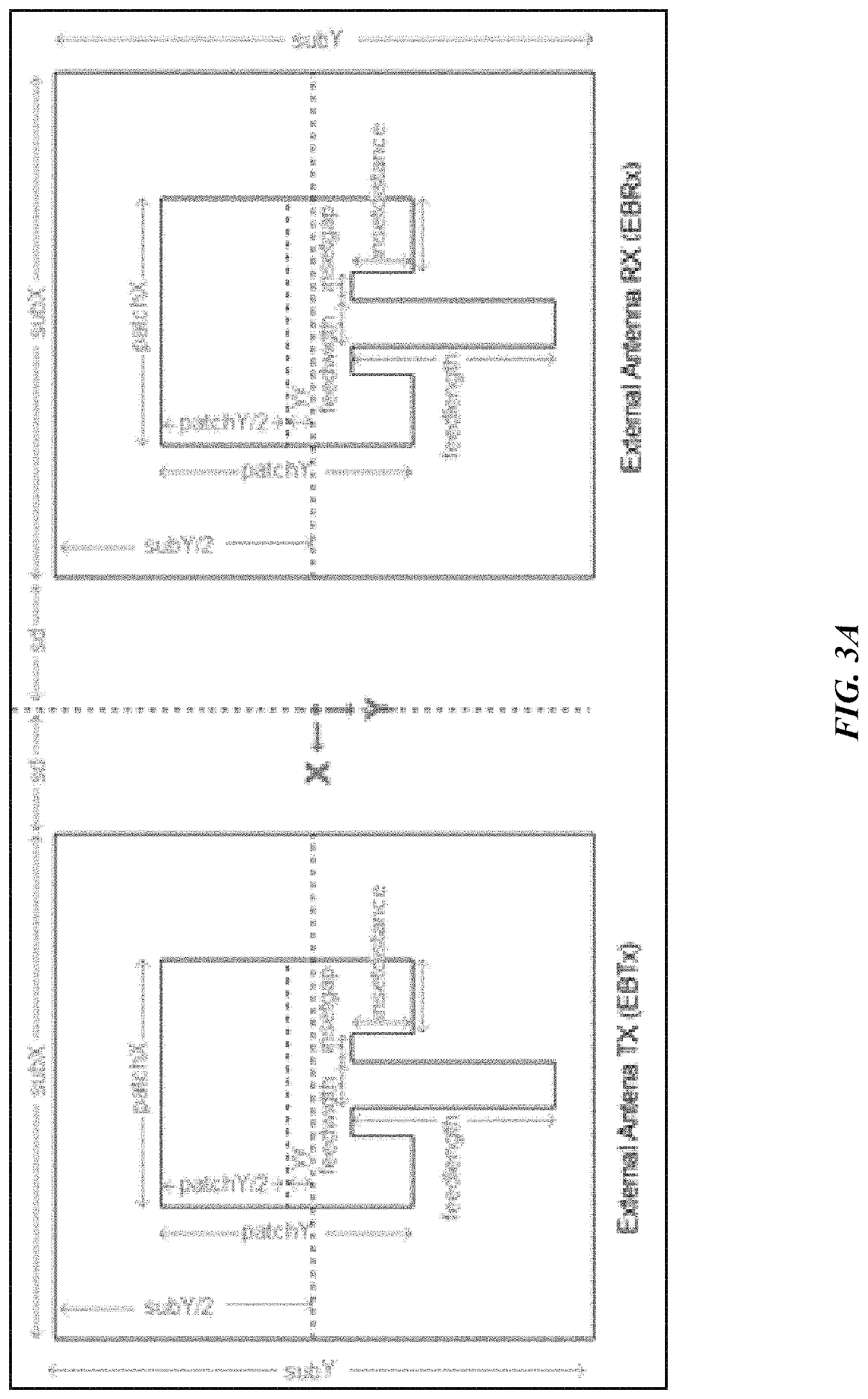Continuous glucose monitoring based on remote sensing of variations of parameters of a SiC implanted antenna
a remote sensing and antenna technology, applied in the field of continuous glucose monitoring systems, can solve the problems of long-term in vivo glucose sensors, increased costs, and patient discomfort, and achieve the effect of extending patient quality of life and reducing the frequency of hypoglycemia
- Summary
- Abstract
- Description
- Claims
- Application Information
AI Technical Summary
Benefits of technology
Problems solved by technology
Method used
Image
Examples
example
[0097]It is an object of this study to provide a sensor platform for the CGM to be able to display variations of the glucose levels outside the body that could give reliable results in frequencies suitable for medical band. The blood glucose levels that surround the antenna changes the resonant frequency at which the antenna operates. This was sensed remotely by sending a signal from the EBTx towards the implanted antenna, which reflected the signal towards the EBRx. The power level of reception of the signal at the EBRx depends on the frequency being sent by the EBTx as well as the level of glucose inside the body. The overall process consists of sending a signal from the EBTx at different frequencies and processing the information of the power levels received for each of those frequencies at the EBRx in order to find a correspondence to the glucose levels. At the end, a mathematical relationship between the glucose level and the resonant frequency was determined, and the glucose l...
PUM
 Login to View More
Login to View More Abstract
Description
Claims
Application Information
 Login to View More
Login to View More - R&D
- Intellectual Property
- Life Sciences
- Materials
- Tech Scout
- Unparalleled Data Quality
- Higher Quality Content
- 60% Fewer Hallucinations
Browse by: Latest US Patents, China's latest patents, Technical Efficacy Thesaurus, Application Domain, Technology Topic, Popular Technical Reports.
© 2025 PatSnap. All rights reserved.Legal|Privacy policy|Modern Slavery Act Transparency Statement|Sitemap|About US| Contact US: help@patsnap.com



